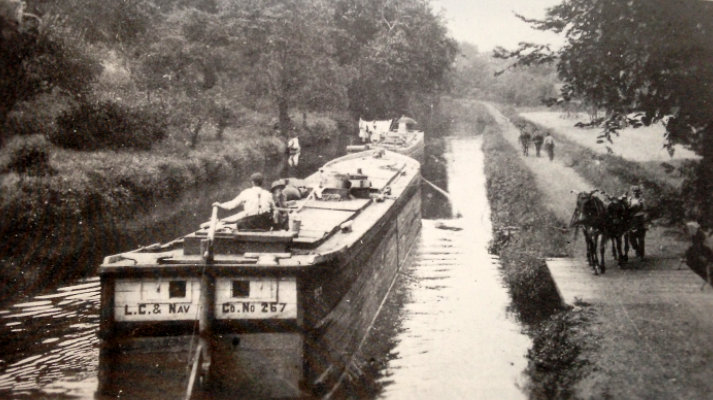Connecting & Defining a Region

The lasting impact of transportation

During the 19th century, the Lehigh and the Delaware Rivers–and their canals– formed an important part of a grand transportation system stretching from the Appalachians to the Atlantic.

Between 1818 and 1834, businessmen Josiah White and Erskine Hazard tamed the rocky Lehigh River by engineering dams and canals. They founded the Lehigh Coal and Navigation Company, and made the Delaware Division Canal an efficient way to transport anthracite coal from mine to market. Hazard and White created one of America’s first industrial and transportation networks, which led to an industrial boom across Pennsylvania and the Northeastern United States.
A great flood
In 1862, a massive flood destroyed all the dams, locks, canal boats, and villages between White Haven and Jim Thorpe along the Upper Grand Division of the Lehigh Canal. This disaster accelerated the shift from the canals to the railroads as the main mode of transportation of goods.

Asa Packer’s Lehigh Valley Railroad, running from Mauch Chunk to Easton and on to New York City, was the first rail line to have a significant impact on the canals. In 1863, The Lehigh Coal and Navigation Company extended its own railroad, which further reduced the tonnage of its own coal it shipped on its canals. Eventually, numerous railroads crisscrossed the entire anthracite region and connected it with industrial centers on the East Coast and the Midwest.
A catalyst for development
The Delaware Canal triggered the commercial development of several communities along its path, most visibly in the Northern and Central Regions of the Corridor. Though most of these towns also boasted industries such as quarries, lumber yards and textile mills, Bucks County never saw heavy industry established along the canal, with the exception of Durham Furnace. Instead, much of the county’s commerce was carried on via the canal, as no major railroad was ever built alongside it.










